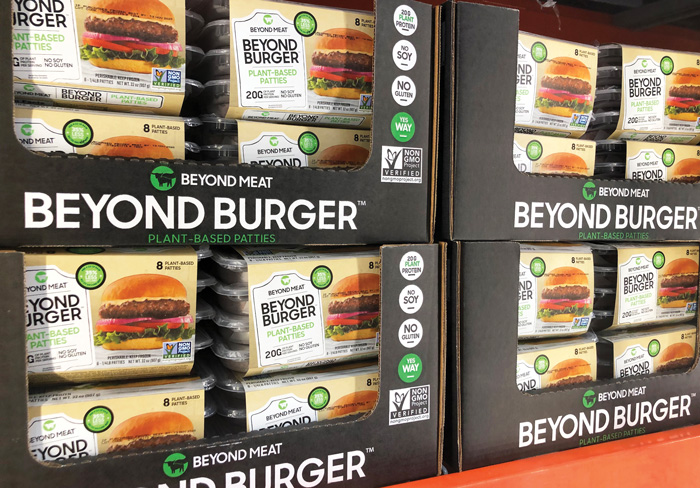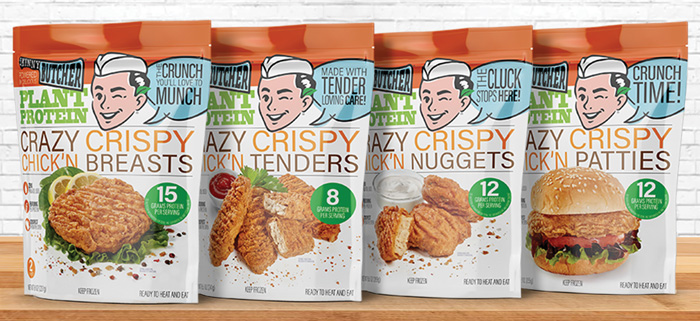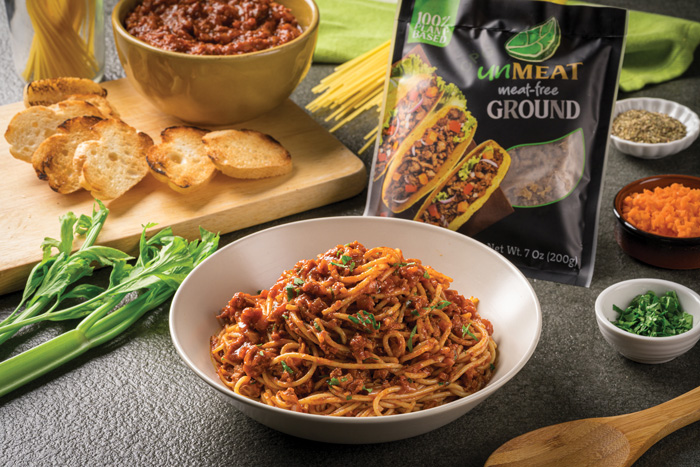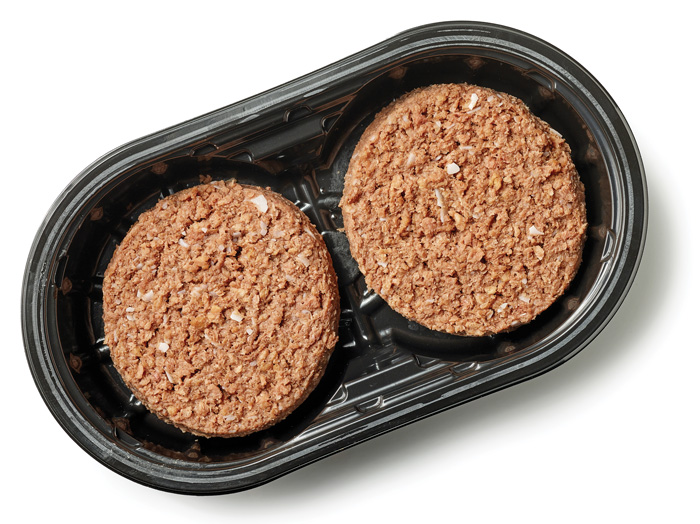
Rebuilding Plant-Based Meat
Much-publicized market stumbles are triggering doubts about the potential of this onetime darling of investors, activists, and curious consumers. What’s it going to take to get it back on track?
Article Content
Paul Shapiro is a warrior for ALT-meats. The former sustainability activist and policy wonk even wrote a book several years ago calling for the replacement of animal products in diets. Then he went and founded a company to act out his principles.
“A lot of people think we should just eat more beans and rice and lentils and that would be great,” says Shapiro, whose thriving four-year-old enterprise, The Better Meat Co., supplies fungi-based ingredients to huge meat purveyors, including Perdue and Hormel. “And that would be great: I love lentil soup, too. But most people want to eat meat and want the experience of eating meat. Many people would be happy to enjoy the experience of eating meat without having to raise animals and slaughter them.”
Indeed, the rise of plant-based meat, both as a food product and as a global cause, is driving much of the innovation in the food business these days and is attracting all sorts of players, including entrepreneurs like Shapiro, venture capitalists, and even major meat companies that are trying to hedge their bets.
But are these forces truly ahead of or at least consonant with the curve, or are they volunteering for ultimately fruitless duty? Sales for one of the highest-profile makers of plant-based meat analogues, Beyond Meat, have faltered badly over the past year. Other major plant burger makers are struggling as well.
“The refrigerated plant-based burger category—like a plastic tray with two patties—is really suffering in the United States,” says Simon Cutts, director of retail partnerships for SPINS, a provider of grocery sales data focused on better-for-you foods, noting that U.S. sales in the category are down 30%–35% compared with 2021.
The plant-based meat industry had $900 million in U.S. grocery sales in 2021, according to NielsenIQ, and Barclays expects plant-based will skyrocket to 10% of total meat consumption, or $140 billion globally, by 2029. Yet despite strong consumer trial, endless cultural and media hype, and the easy cooperation of Wall Street and venture capital investors, repeat purchases are where these products are stumbling.
Unrealistic Expectations?
“The disappointment experienced by Beyond and many others is a result of the echo chamber of lazy thinking, which created a myth that there was going to be a plant-based-meat ‘revolution,’” says Julian Mellentin, editor of New Nutrition Business and an early and consistent skeptic about the future of plant-based meat. Meanwhile, Steve Cahillane, CEO of Kellogg, owners of the MorningStar brand of alt-meats, told investors recently there had been “irrational exuberance” over the category in general.
The question now is whether the meat analogue business faces challenges that are truly existential or simply the kinds of problems most new technologies churn up when they’re aimed at overturning a well-entrenched status quo.
Curiosity, a desire to improve their diets, and a dedication to more sustainably produced foods are compelling millions of consumers in North America and worldwide to try plant-based meats, poultry, and seafood, moving these categories squarely into the dietary mainstream. But at the moment, high prices—and the experiences involved in actually using the products—are holding many back from making a habit of it.
“Taste, moistness and juiciness, texture, cooked appearance, and nutritional value are the top five drivers when consumers are making purchase decisions, according to our surveys,” says Dilek Uzunalioglu, senior director of food discovery and design for Motif FoodWorks, a developer of ingredients for meat analogues (and subject of a lawsuit by alt-meat company Impossible Foods over one of them), which recently announced it would supply its own plant-based alternatives under private labels to foodservice and retail brands.
Some of the problems plant-based meat makers are encountering begin with the ingredient lists. Methylcellulose, which is used in both Impossible and Beyond burgers, is another “particular problem for consumers, one of those ingredients that puts off a lot of people once they read the ingredient label,” says Arlin Wasserman, founder and managing director of Changing Tastes, a culinary and sustainability consultancy.
Lightlife Foods, the Maple Leaf–owned brand of soy-based meat alternatives, taunted Beyond Meat and Impossible Foods in a full-page advertisement in The Wall Street Journal last year. “Enough with the hyper-processed ingredients, GMOs, unnecessary additives and fillers, and fake blood,” the ad read. “While we want the same things—a greener planet and a more sustainable food system—at Lightlife, we’ve chosen a very different way to get there. We’re making a clean break from both of you ‘food tech’ companies that attempt to mimic meat at any cost,” the ad continued, explaining Lightlife’s own commitment to “using simple ingredients” that “are clean, recognizable, and simple to pronounce.”
Taste and Texture Challenges
The process of creating meat-like alternatives is complex. “You have to do a lot to get a pea to taste like an animal,” says Shapiro. “You have to strip out the fiber and fat and then subject the pea protein powder to an extrusion process, which means extremely high pressure and temperatures to change the molecular structure of protein so it becomes stringy, like animal proteins, whereas a plant protein is typically globular.”
Even after all of that, some food scientists say, the results don’t measure up, and the eating experience is why many consumers aren’t repeating purchases. “Consumers say their taste, texture, and flavor come up short in terms of juiciness and fatty mouthfeel, lack of sustained springy and bouncy texture during chew down, a chalky and powdery mouthfeel, and in other ways,” Uzunalioglu says.
Such challenges for the Beyond Burger may stem from the fact that it’s only about 14% to 15% protein, while ground beef ranges from 22% to 26% protein, says Paul Hart, a former Unilever research chief and executive who helped Quorn come up with its mycoprotein-based formula for chicken alternatives about 20 years ago. The burger’s protein content, he says, is not that far off from high-protein bread.
“Nobody complains about the texture or taste of fibrous proteins in breads, but the moment you try to make a succulent, juicy burger out of plant proteins, you’re stuffed,” Hart says. “You’ve got to use cheap sources, and you always have to include a side order of things. There’s not enough soluble protein in cereals, grains, and nuts, and not enough gelling properties to give you the delicate juiciness and succulence known in steak or burgers.”
A related problem, Wasserman says, is that the “taste of these burgers is dialed and locked in at the factory, unlike [meat] burgers that can absorb seasonings. That can get a bit repetitive, like ordering your favorite meal over and over again and never mixing it up.”
Ken Harris observes that how consumers feel about Impossible and Beyond burgers may depend on how important variety and complexity are to their eating experience. “People’s perception of a great burger varies so widely that it’s impossible to get a handle on it,” says the managing partner of Cadent Consulting Group.
Nonetheless, what Beyond, Impossible, and some other alt-meat purveyors have accomplished through trial and error and thousands of hours of lab work is to deliver taste and texture akin to that of beef, pork, chicken, and fish. Some consumers are just happy about the fact that today’s plant-based burgers taste so much better than the soy burgers of the 1980s, Rob Dongoski, food and agribusiness leader for consultancy EY, reflects.
Shapiro says that Better Meat’s mycoprotein ingredient has textural advantages over plant-based ingredients for alt-meat formulations. “Straight out of the fermenter, our product already has a meat-like texture and, microscopically, it’s a stringy protein like meat,” he says. “So you don’t have to isolate it, fractionate it, or extrude it. That reduces the complexity and cost of production.”
Also, Shapiro says, “we sell our ingredients for less than the cost of beef,” which will help out price points of mycoprotein-based products. “The problem for us is fermentation capacity is constrained. With plants, if you need more of them, you plant more acres. With us, the only way to produce more is to build bigger fermenters, and the CapEx (capital expenditure) is substantial.”
Price Barriers
Alt-meat product price points can be problematic, some experts say. While most other plant-based analogues, such as yogurt and milk alternatives, are only about 15% to 20% more expensive than their counterparts, many plant-based burgers are roughly 20% to 30% more expensive than the meat varieties. And prices for Beyond and Impossible burgers range even higher. “Those burgers are about $10 to $13 a pound, which is twice the price for quality ground beef,” Cutts says.
With U.S. shoppers still contending with food-price inflation that’s higher than in a generation, price has become an even more significant barrier. “You’re asking mom to spend a lot for plant-based protein,” says Dave Zilko, whose Skinny Butcher tries to keep its suggested prices for chicken analogues at about 25% to 30% more than for chicken nuggets. “She’s got to be really committed to fighting animal cruelty and to sustainability.”
Beyond Meat and Impossible Foods didn’t respond to requests to be interviewed for this article. Beyond has addressed the complexity of its recipe by reducing the number of ingredients, and the company reportedly has had a satisfying consumer response to its new alt-steak products. While McDonald’s has discontinued its Beyond Meat–supplied McPlant burger after an extensive test, Beyond is continuing experiments with other fast-food companies.
Impossible and Beyond executives have also noted that their sales trends are holding up better in some international markets than in the United States. They have insisted that demand for their products will resume growing as they further scale up and determinedly begin to close the price gap between plant burgers and meat ones. They’re also counting on cost pressures rising beneath supplies of competing beef, chicken, and other livestock to help in future price comparisons.
Yet Mellentin maintains that achieving price parity isn’t a panacea. “Beyond Meat and its competitors have been using heavy price discounting for several years already,” he says. “That’s one of the reasons they cannot make a profit, and it has done little for sales. If something falls short of consumers’ taste expectations, price is of no help.”
In any event, mainstream consumers’ unwillingness to rise to certain price points for plant-based meat alternatives is reinforced by sales results in another category. According to SPINS, in 2022, sales of refrigerated, plant-based dinner sausages, such as Italian-style and bratwurst, declined compared with 2021, though not as much as plant-based burgers fell. Yet at the same time, sales of plant-based hot dogs, a less expensive option than fancier sausages, rose.
In another sign that high prices are an inhibiting factor for further uptake of plant protein alternatives, shelf-stable meats also are getting some competition from plant-based. Some products from unMEAT, a line owned by Century Pacific Food, are showing up in canned aisles at Walmart, H-E-B, and independent stores. The unMEAT brand comprises five plant-based product lines, including nuggets, patties, and a ground beef alternative in addition to canned alt-meat and alt-tuna products.
Century Pacific understands that price is key for the segment of consumers shopping for canned meat such as Spam. “We’re making a conscious decision to line-price or be very close to the meat or seafood alternative,” notes Patrick Baskin, U.S. market lead for the company.
A Surge, Then a Stumble
The vegan, the vegetarian, and the cuisine-curious gave some plant-based products a fast start out of the gate, and the growing throng of flexitarians provided more momentum. The pandemic also lent plant burgers a huge boost as grocery retailers across the country started carrying them and more consumers began making meals at home. Fast-food chains validated the phenomenon, with Burger King beginning to offer the Impossible Whopper in 2019.
Beyond sales boomed from $32 million in 2017 to $297 million in 2019, then to $464 million in 2021 as the pandemic wound down, and further set a record pace with $256 million of sales in the first half of 2022. Beyond took advantage of the momentum with an IPO in 2019 that yielded $240 million in proceeds and produced an investor valuation of nearly $1.5 billion.
Meanwhile, Impossible was tracking even better, with retail sales in 2021 that were up more than 85% year-over-year, according to Forbes, and selling patties not only in Burger King but also in about 45,000 restaurants and about 25,000 grocery stores. The company was valued at $7 billion in June, with an IPO plan still apparently in the works.
The plant-based express train began to derail in mid-2022, with rampant food-price inflation providing new resistance that proved enough to shake the foundation. “The second quarter of 2022 saw a sequential contraction in U.S. household penetration of plant-based meat for the first time in four years,” Beyond Meat President and CEO Ethan Brown told investors. Analysts finally took the occasion to rue what Wall Street long had ignored: Beyond’s operating losses were mounting, coming to $187 million in the first half. That meant it cost Beyond $1.72 to produce every dollar of product it sold.
Privately held Impossible Foods’ sales may have held up better, fueled in large part by its supply to Burger King. But that startup’s future has been cast into some doubt by Impossible Foods founder Patrick Brown’s stepping down as CEO in the fall of 2022, to head a new company-launched venture, Impossible Labs, and then by his taking a leave of absence in late 2022 which, reportedly, he planned to end early this year.
Traditional Players Change Course
Meanwhile, the market share gobbled up by Impossible and Beyond in plant-based burgers—even while they created significantly more volume for the category as a whole—has begun to take a toll on traditional players in the crucial U.S. market.
Maple Leaf Foods, for instance, cut the size of its plant-based protein division by 25% in late 2022 as category sales failed to meet expectations. That represented a huge shift in its outlook for plant-based meat just five years after Maple Leaf acquired the Lightlife brand. In December, Maple Leaf turned to Better Meat to form a partnership to develop mycelium products.
Little more than two years after debuting its OZO plant-based brand in Kroger stores in 2020, JBS Planterra late last year said that it planned to pull the plug on its sole U.S. plant. And Kellogg said it would spin off its MorningStar Farms brand as the CPG titan restructures into three companies, one each around cereals, snacks, and alt-meat, with the idea of giving its venerable plant-based business a better chance for growth with more focused management.
Zilko’s Skinny Butcher is among new entrants in another huge plant-based category: chicken alternatives. As U.S. fast-food companies have become obsessed with topping one another with the latest chicken sandwich and parents continue to look for healthy nugget-type products their children will eat, plant-based players are jumping on the bandwagon. Major meat companies, including Smithfield, Tyson, and Perdue, moved into the chicken-alternative space, but some have pulled back.
Meat companies’ hedging approach underscores another long-term obstacle for plant-based alternatives: the existence of a competing, and very robust, narrative and market for animal-based products.
Livestock interests are taking sustainability steps such as cutting methane emissions by cattle and enhancing product quality with beef that is grass fed and finished. And the nutritional reputations of animal products are growing with greater dietary attention to the contribution of fat to brain health.
Another wild card is what consultant Harris calls “3.0” of the evolution of meats, with the efforts by technology startups worldwide to use cellular technology and even 3-D printing to produce a new generation of analogues that will rely on teasing cultures of actual meat cells into much more accurate representations of beef, chicken, pork, and fish than anything plant proteins could pull off.
“Long-term growth rates in demand for protein are high, and there is no model that takes animal production out of the picture,” EY’s Dongoski notes. “Why pit them against each other? Why not coexist and let consumers eat what they want?”
Omnivore Podcast
For more insights into the scientific challenges of creating palatable plant-based meat products, listen to an interview with D. Julian McClements in IFT’s Omnivore podcast.
Digital Exclusives
Plant-Based Invades the Dairy Case: The success of the plant-based dairy category suggests what’s possible for alt-meat makers if they can overcome current market challenges.
New Niches for Meat Companies: Leading meat companies are venturing into the plant-based category via investment in startups and by developing their own new alt-meat products and also via the development of hybrid meat/alt-meat offerings.
Key Takeaways
- Meat analogue category sales have slowed after growing strongly in recent years.
- Disappointing repeat purchases after trial are a key contributor to the market challenges.
- To reverse market trends, improving taste and texture and getting closer to price parity with meat products are essential.

















